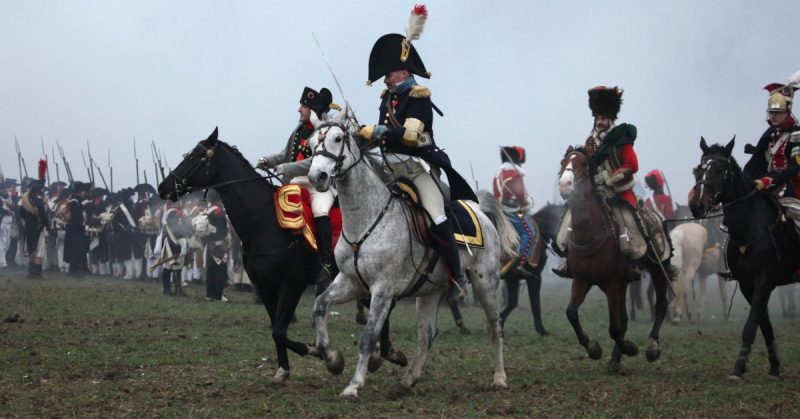Charles-Étienne Gudin is believed to have been one of Napoleon’s favorite generals. He attended the same military school that Napoleon attended. He was a veteran of the French Revolution and the Napoleonic Wars. He was killed during the French invasion of Russia after his legs were hit with a cannonball.
Doctors amputated one leg but he died from gangrene three days later, on August 22, 1812. He was 44 years old at the time.
He was honored with a bust in the Palace of Versailles and by having his name carved in the Arc de Triomphe. There is also a Paris street named after him.
Before his burial, the French army removed his heart and buried it in Paris. Historians have been unable to ascertain where the rest of his body was buried.
But researchers searching for his body with help from the Kremlin believe they have found it. Using the memoirs of another general from Napoleon’s army, Louis-Nicolas Davout, they were able to narrow down the possible location of Gudin’s grave.
Davout was the one who organized the funeral for Gudin. He described the location in his memoirs. Using the account of another witness, the researchers were able to pinpoint the location of the grave.
According to the head of the archaeological team, they were certain they had found Gudin as soon as they saw the skeleton. It was buried in a wooden coffin beneath a dance floor in Smolensk, which is west of Moscow in Russia. The skeleton is missing a leg and shows signs of injuries consistent with Gudin’s injuries.
They have sent the skeleton to Marseille to get a definitive answer as to whether it is Gudin’s. The lab in Marseille is testing the DNA of the remains. Preliminary reports show that the remains are of a man who was between the ages of 40 and 45 when he died.
The archaeological team consists of both French and Russian researchers. They began the investigation in May.
Team asks for DNA tests on Napoleon general found in Russia https://t.co/2tWfviK5Gu pic.twitter.com/Sjq394yru3
— ArtDaily (@artdaily) September 2, 2019
Napoleon’s attempt to invade Russia was a disaster. His Grande Armee consisted of 400,000 men. It was thought to be unbeatable. Napoleon expected a quick victory against the Russians and his troops were able to capture Moscow once the Russian army retreated during a particularly difficult winter. But the same difficult weather conditions forced the French to retreat as well.
Napoleon famously wrote a letter expressing his frustration about the difficulty in the invasion, at one point threatening to blow up the Kremlin. In it, he discussed the fact that his calvary was decimated and many of the horses were dying.
The Russians helped to force the French into this situation by forcing them to retreat the way they had arrived. This path had already been stripped of resources by both armies. The French horses had no grass to eat. The ones that didn’t die of starvation were eaten by the starving soldiers.
The retreat turned out to be a turning point in the Napoleonic wars. The battles and weather reduced the French forces to just a fraction of what they had been at the beginning of the fighting.
Gudin himself was a decorated soldier and officer. He was the son of an officer and his uncle was a general. At one point, he fought in four different battles in the same week. He was created a Count of the Empire and a Commander of the Order of Saint-Henri of Saxony. For a short time, he was the governor of Fontainebleau.
While fighting at Wagram, he survived being shot four times and was rewarded with the Grand Eagle of the Legion of Honor.
Another Article From Us: Fort Wellington best preserved, British Military Fort
He commanded his division in the attack on Smolensk during the invasion of Russia. During the Battle of Valutina, he was leading a brigade when the cannonball smashed his legs.
